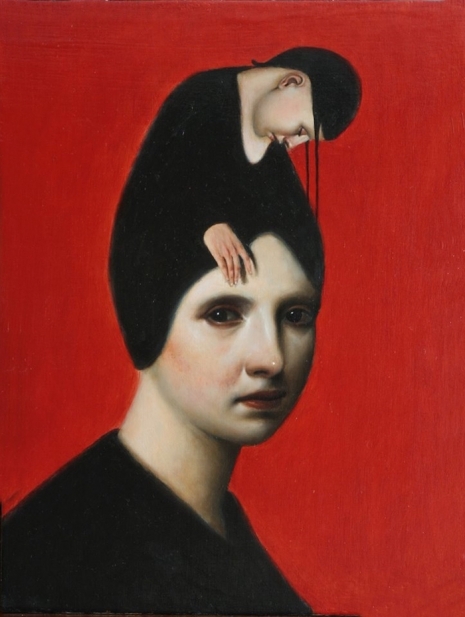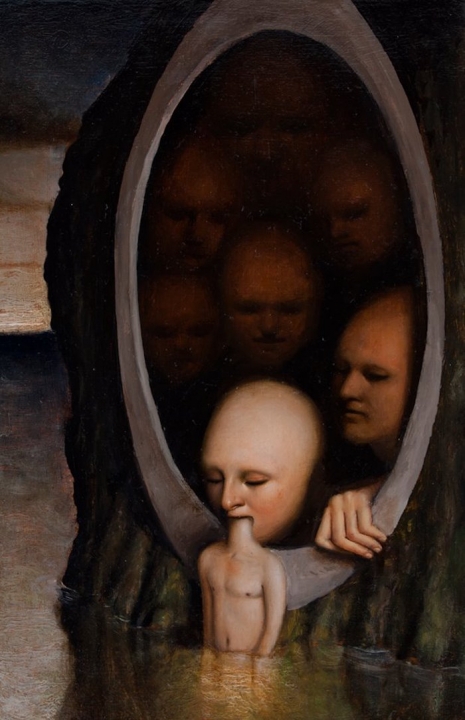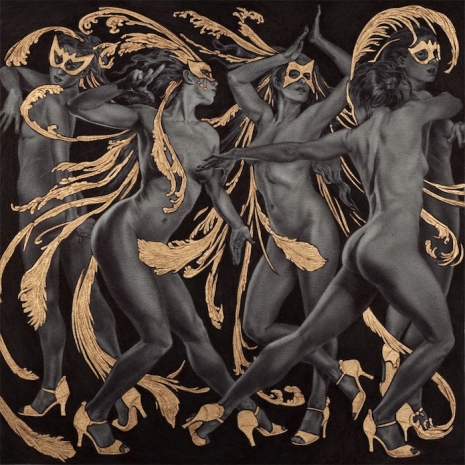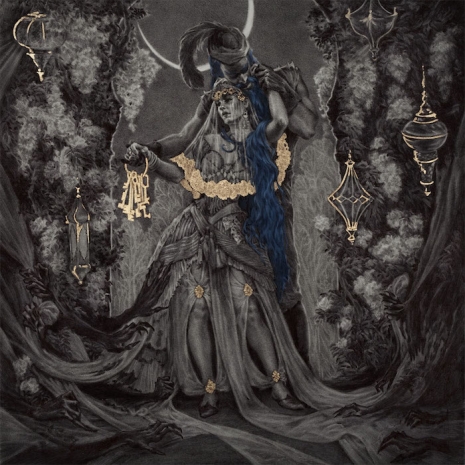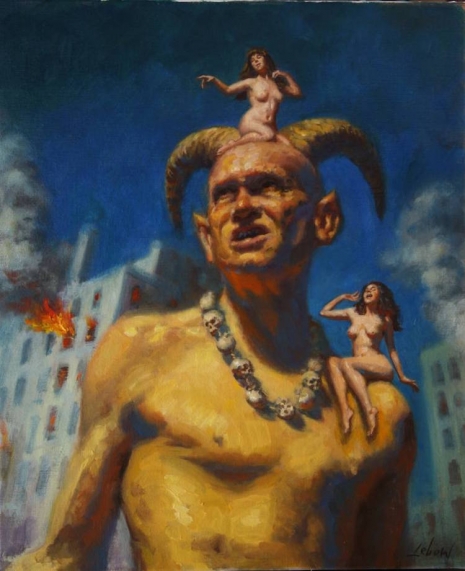
Satan’s Muses
Don’t know much about art history. Don’t know much about graphology. Don’t know much about comic books. Don’t know much about the way things look. But what I do know is what I like and what I currently like are these big, colorful, classical, fantasy, pulp fiction-type canvases by artist Dave Lebow.
Lebow’s paintings mix pop culture with fairy tales and horror fiction. His byline sez he’s “old school” with “a wickedly contemporary retro style that recalls the pulp magazines of long ago.” That’s probably why his work hits the spot and fits snugly like a blue suede shoe on my size ten feet.
You may have seen his specially commissioned paintings (giant biblical canvases) on the cult TV series Dexter or maybe his paintings on ABC’s October Road or the History Channel’s Strange Rituals. His artworks look like gorgeous illustrations from old classic storybooks by the Brothers Grimm, H. P. Lovecraft, or even Stephen King. They impart a scene from a dream-like narrative which you the viewer are invited to make up as you go along, as Lebow has said:
I want my images to grab you and drag you, if not willingly, then kicking and screaming into my picture. I’m inspired and interested in imaginative storytelling pictures that evoke an emotional response.
Originally from Oklahoma, Lebow graduated in Painting from Boston University and has an MFA in Experimental Animation from Cal Arts. Now based in California, he creates his pictures by first sketching out his idea before blocking out a version in oils then painting the full image in all its fabulous technicolor glory.
More recently, Lebow’s paintings have included some pointedly political/satirical portraits of President Trump—one as a member of the KKK another as a Nazi—which don’t seem out of place beside his more fantastical work of demons and devils and two-headed monsters. In fact, he looks right at home.
Lebow certainly gets my vote and you can see more of his work here or maybe buy a print here.

‘All That Glitters.’
Many more of Lebow’s wondrous artworks, after the jump…...






